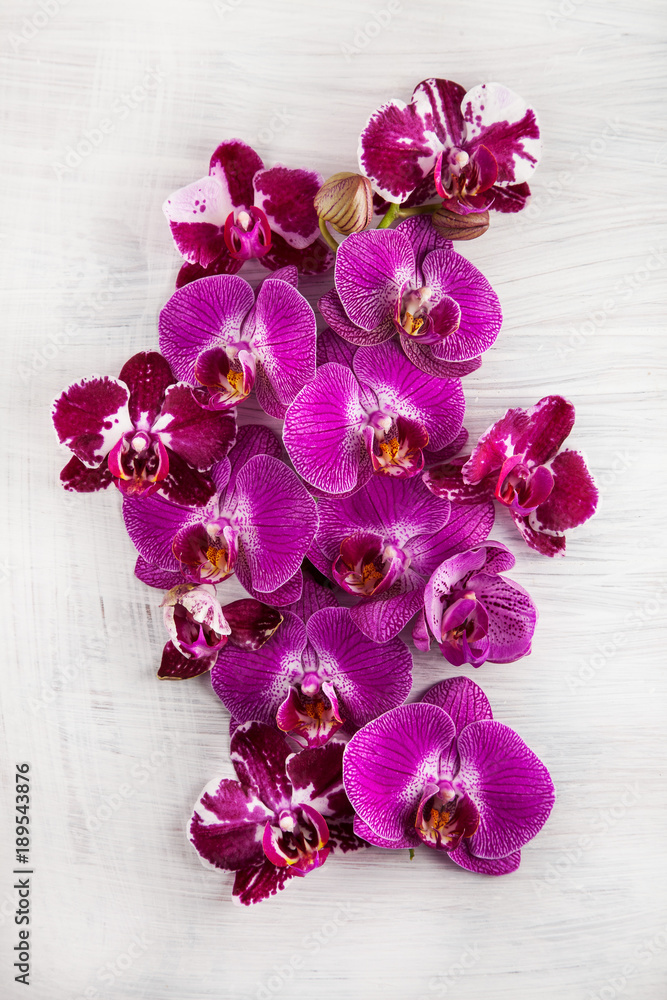If you’re thinking about using LED lights to grow orchids, you might be wondering if they can get too much light and actually burn the plants. The answer is yes, LED lights can be too intense for orchids and may cause burning. However, there are a few things you can do to prevent this from happening.
Can Orchids Burn under Led Light?
Orchids are a beautiful and delicate flower, but did you know that they can actually be quite sensitive to light? If you’re thinking about using LED lights to grow orchids, you might want to think again.
While LED lights don’t give off as much heat as other types of lights, they can still emit enough light and heat to damage or even burn your plants. So, if you’re going to use LED lights to grow orchids, make sure you keep them at a safe distance from the plant itself.
How to Get Orchids to Reflower
If you want to get your orchids to re-flower, there are a few things you can do to encourage them. First, make sure they are getting enough light. Orchids need at least 12 hours of sunlight each day, so if you’re keeping them indoors, be sure to place them near a sunny window.
Secondly, water your orchids regularly and fertilize them monthly with an orchid fertilizer. Finally, don’t forget to deadhead the spent flowers – this will signal to the plant that it’s time to produce more blooms!
Do Store Bought Orchids Bloom Again
If you’re like most orchid growers, you’ve probably had the experience of buying a beautiful orchid in bloom, only to have it quickly fade away. But what if I told you that with a little care, your store-bought orchid can not only bloom again, but continue to bloom for years to come? Here’s what you need to know to get your orchid blooming again:
First, it’s important to know that most store-bought orchids are actually Phalaenopsis orchids. These are also known as moth orchids, and they’re native to tropical regions of Asia. Phalaenopsis orchids are relatively easy to care for, which is why they’re such popular houseplants.
The key to getting your Phalaenopsis orchid re-blooming is providing it with the right environment. Orchids prefer bright, indirect light and high humidity. If you can provide these conditions in your home, your orchid should do just fine.
Watering is another important aspect of Orchid care. Water your Orchid once a week, making sure the potting mix is evenly moistened but not soggy. Allow the potting mix to dry out slightly between waterings.
Over-watering is one of the most common reasons why Orchids fail to bloom again.
Finally, fertilize your Orchid every other week with a balanced fertilizer designed for Orchids. Be sure to follow the directions on the fertilizer packaging so you don’t overdo it!
With proper care, your store-bought Orchid should reward you with many more years of beautiful blooms!
Heat Lamp for Orchids
If you have an orchid that is not blooming, you may need to give it a little extra help. One way to do this is to use a heat lamp.
A heat lamp can provide the extra warmth that an orchid needs to encourage blooming.
It is important to make sure that the heat lamp is not too close to the plant, as this could damage it. You also want to make sure that the room where the orchid is kept is well-ventilated.
If you are using a heat lamp for your orchid, you will need to give it 14-16 hours of light per day.
This can be done by using a timer so that the light goes on and off at the same time each day.
Is My Orchid Getting Enough Light
If you’re wondering whether your orchid is getting enough light, there are a few things you can look for. First, check the leaves of your plant. If they’re pale green or yellow, that’s a sign that your orchid isn’t getting enough light.
Another way to tell is by looking at the shape of the leaves. If they’re drooping or curled up, that’s another indication that your plant could use more light.
There are a few things you can do to increase the amount of light your orchid gets.
One option is to move it closer to a window where it will get more natural sunlight. You can also invest in grow lights, which will provide artificial light for your plant when natural sunlight isn’t available. With proper lighting, your orchid should start to look healthier and its leaves should become more vibrant green.
Light for Orchids
Orchids are one of the most popular flowers in the world, and they come in a wide variety of colors, shapes, and sizes. They’re also known for being relatively finicky when it comes to their growing conditions. One of the most important factors in Orchid care is providing the right amount of light.
In general, Orchids prefer bright, indirect sunlight. If you live in an area with harsh summers, it’s best to keep your Orchids out of direct sunlight to prevent them from getting too much heat. Many people choose to grow Orchids under artificial lights, which can be found at most hardware or home improvement stores.
When it comes to watering, less is more with Orchids. Be sure to check the soil before watering, as overwatering can lead to root rot. Allow the soil to dry out completely between waterings, and don’t be afraid to let your Orchid go dormancy if it starts to wilt – this is actually a sign that it’s time for a rest!
With proper care, you can enjoy these beautiful flowers indoors or outdoors all year long!

Credit: stock.adobe.com
Can Led Lights Burn Orchids?
No, LED lights cannot burn orchids. Orchids are a type of plant that is native to tropical and subtropical regions of the world. They require bright, indirect sunlight to grow and thrive.
While LED lights emit very little heat, they are not intense enough to provide the necessary light for orchids to grow properly. If you are looking for a lighting option for your orchid, fluorescent lights are a better choice.
Can Plants Burn from Led Lights?
Yes, plants can burn from LED lights. This is because LEDs emit a high intensity of light that can be harmful to plants if they are exposed to it for too long. Plants need light to grow, but too much light can damage their leaves and cause them to wilt and die.
When choosing an LED light for your plants, it is important to choose one with a lower intensity so that your plants do not get burned.
Can Orchids Survive on Artificial Light?
Yes, orchids can survive on artificial light, but they will not thrive. Orchids need a minimum of 12 hours of sunlight (preferably filtered) to produce the energy they need to flower. They also need a rest period at night, so putting them in a dark room or closet for 8-10 hours every day is important.
If you don’t have access to natural sunlight, you can use fluorescent bulbs placed about 18 inches from the plant. Be sure to rotate the plant so that all sides receive light.
Do Led Lights Hurt Flowers?
When it comes to growing flowers, most people rely on natural sunlight to power the process. However, there are some people who opt for artificial lighting, such as LED lights, in order to grow their plants. While LED lights are certainly more energy-efficient than traditional lightbulbs, you might be wondering if they can hurt your flowers.
The answer is: it depends. Some flowers are more sensitive to light than others, so you’ll need to do a bit of research to figure out which type of flower you’re growing and whether or not LED light will have an adverse effect. In general, however, most flowers should be fine under LED lights as long as they’re not placed too close to the plant (which can cause burning).
Of course, it’s always best to err on the side of caution and start with lower intensities of light if you’re unsure. You can always gradually increase the intensity if you find that your plants are doing well under the LEDs. So, in short: yes, LED lights can potentially hurt Flowers – but only if they’re placed too close or used at too high of an intensity.
Otherwise, these energy-saving bulbs should help your garden flourish!
Will Orchids Thrive Under Artificial Light Alone Without the Risk of Burning?
Growing orchids under artificial light can be a successful alternative, ensuring they thrive without the risk of burning. Artificial light sources like LED grow lights offer a balanced spectrum and reduced heat emissions, mimicking natural sunlight. With proper placement and duration, orchids can flourish, provided they receive adequate light intensity and duration for healthy photosynthesis.
Growing orchids with artificial light – LED strips
Conclusion
Orchids are a type of flower that is known for its beauty and delicate nature. While they are typically associated with being kept indoors, some people do choose to grow them outdoors. However, there is a risk of the flowers burning if they are placed under direct sunlight for too long.
This is where LED light comes in handy, as it does not produce as much heat as other types of light bulbs. As such, it can be used to provide gentle illumination for your orchid without risking damage to the flower.






